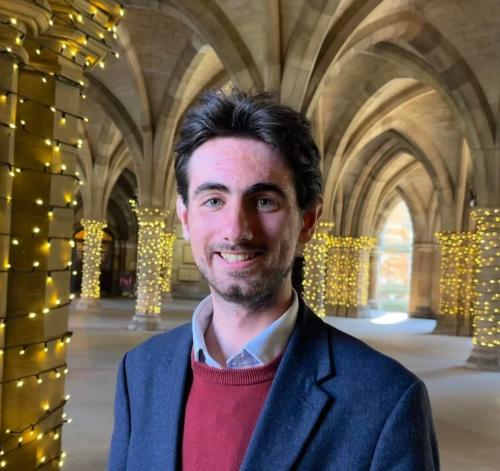Yad Vashem

Barnabas Balint is a doctoral candidate at Magdalen College, University of Oxford. His multi-lingual research (English, French and Hungarian) combines the history of childhood, gender, and identity to explore the lives of Jewish youth during persecution in Hungary. He has written, published, and presented internationally on aspects of the Holocaust across Europe, including for the EHRI, IHRA, and in the Journal of Holocaust Research, and he holds the 2021-2022 Breslauer, Rutman, and Anderson Research Fellowship at the University of Southern California Dornsife Center for Advanced Genocide Research. Outside of the academy, he is joint postgraduate representative for the British Association for Holocaust Studies, has worked for the Holocaust Memorial Day Trust, and has led ceremonies, organised conferences, conducted training sessions, and spoken to UK national leaders including the Chief Rabbi, Metropolitan Police Commissioner, and Prime Minister.
His research as an EHRI Fellow at Yad Vashem will explore how age functioned as an intersectional category for young people during the Holocaust. He will draw on undigitized documentation from the Kibbutz Ha’artzi Archives, especially their collection on the Hashomer Hatzair Movement in Hungary and Slovakia, to explore the impact that persecution and war had on youth groups, their activities, and the meanings they ascribed to them. He will also analyse the card index of Munkaszolgálat (forced labour) casualties from the Hall of Names database to understand the position of young people in the forced labour battalions.
Yad Vashem also holds a significant collection on Otto Komoly, the leader of the Hungarian Zionist Association, outlining his connection to the youth movements and young people in Budapest. Particularly intriguing are entries in this diary, pertaining to Komoly’s daily meetings with Jewish groups and Hungarian government figures. Finally, he will place the changes to young people’s lives within the broader social, political and economic contexts through the Hungarian Jewish Communities collection. By combining these different types of sources, he seeks to bring together perspectives from different actors to provide a holistic picture of young Jewish responses to persecution in Hungary.
